
As Zeus said to Narcissus : "Watch Yourself !"
----
ADDRESS AT VISION '65
by Marshall McLuhan [The American Scholar, Spring, 1966, pp.196-205]
I bring you greetings from the country of the DEW line, or early warning system. Canada carries perhaps a potential role as an early warning system. As the United States becomes a world environment, Canada might serve very well as an early warning system for culture and technology, and on many levels. But this is a whimsy.
We had a delightful story at lunch about the French actor who expressed the delight he had on the stage because of its permitting him to kiss ladies' hands. He said: "You know, you have to begin somewhere." The companion piece to that one is somewhat closer to my predicament — the mosquito in the nudist colony who said: "I don't know where to begin."
The world of humor, as a system of communications, is one that has occasionally interested people, and we live in a time when joke styles have changed very rapidly. I am told by my own children that the latest form of joke concerns the "Poles," and they gave me as an example: "Alexander Graham Kowalski — the first 'telephone Pole.'" This kind of humor is like the slightly older form of the elephant joke and the kind that the computer programmers enjoy — "What is purple and hums?" Of course, the answer is: "An electric grape." "And, why does it hum?" "It doesn't know the words." This kind of joke appeals enormously to youngsters today.
If you notice, the tendency in these kinds of jokes, or gags, is for the story line to be stripped off. They tend to be deprived of the old story line, and in its place you have a capsule, a compressed overlay, of stories. In fact, there are usually two stories in these little jokes, simultaneously. The older-fashioned jokes had a straight story line. Steve Alien has a theory that the funnyman is a man with a grievance. In French Canada there are a good many jokes going around these days that are by way of being grievance stories. One of them is this: A mouse being pursued around the house by the house cat finally finds a little spot in the floor to creep in and hide. After a while, everything seems quiet, until suddenly there is a kind of "Arf-Arf-Bow-Wow" noise and the mouse feels the dog must have frightened the cat away, so it pops up and the cat grabs it and chews it down. As he chews the mouse down, he says: "You know, it pays to be bilingual." That is the old kind of square joke with a story line around it.
The new stories tend to be much more compressed and on two levels at once, like the sort of Finnegans Wake phrase: "though he might have been more humble, there's no police like Holmes." That kind of compressed double-plot story is a very interesting development; and, if you notice, great successes like My Fair Lady usually have two plots. One of them is explicit. One is perfectly obvious, like [pg. 219] the story of Liza Doolittle acquiring the King's English and becoming a great social success. But there is a subplot in My Fair Lady that is much more potent and much concealed. The subplot would seem to be "how to succeed in business without really trying." The subplot is an environmental one — it includes everybody. The main plot, the little story about Liza Doolittle, appeals to a relatively small group and is not a new story. It is a Cinderella story. But the story of "how to succeed in business without really trying," or, in other words, how to become a huge success by sheer gimmickry, would seem to be the life story, the inside life story, of a very large proportion of the top executives of our world. In other words, My Fair Lady has this environmental subplot that is implicit and unverbalized, and that includes the audience. With the subplot, the audience goes right into action. With the main plot, they simply sit outside looking on.
There is a subplot in the famous Hathaway shirt advertisement of the baron with the black patch on his eye. The main plot is simply Hathaway shirts. The subplot, the one that really includes the whole audience, is the black patch which bespeaks the world of -aristocratic intrigue, hunts for hidden treasure, and many other mysterious dimensions, all expressed instantaneously by the black patch. The subplot world, the subenvironment, is really that which includes the audience, and it is the power to effect this kind of inclusion that is the mystery of humor, and that explains the rapid change of humor styles — because one style joke will not accommodate a very large proportion of the audience from one period to another.
There is a new book by Jacques Ellul, the Frenchman. The book has recently been published in English. It is called Propaganda. Ellul's book has as a theme that propaganda is not ideology; it is not the Hathaway shin story. It is rather the hidden, but complete, image of a social way of life that is embedded in the social technologies and social patterns, as it is embedded in, say, the English language. Ellul would say the action of the English language, the action of the French language — that is propaganda. Thai presents a total environmental image to men, whereas the ideologies, the explicit verbalized messages, are relatively insignificant compared to this overall image. Ellul's theme in a word is this: Propaganda consists in using all the available means of one's society to create a way of life. Whatever that way may,be, is propaganda — that is action that is total and invisible. and invincible.
This is another mysterious feature about the new and potent environment we now live in. The really total arc saturating environments are invisible The ones we notice are quite fragmentary and insignificant compared to the ones we don't see. The English language, for example, as it shapes our perceptions and all our habits of thought and feeling, is quite unperceived by the users of the English language. It becomes much more perceptible if we switch suddenly to [pg. 220] French. But in the case of environments that are created by new technologies, while they are quite invisible in themselves, they do make visible the old environments. We can always see the Emperor's old clothes, but not his new ones.
I want to use this theme a little bit for our purposes here this afternoon. If the new environment is invisible, it does serve to make very visible the receding environment. The obvious and simple illustration of that is the late show. On the late show on television we see old movies. They are very visible; they are very noticeable. Since television, the movie form has been reprocessed. The form of movie that once was environmental and invisible has been reprocessed into an art form, and, indeed, a highly valued art form. Indirectly, the new art films of our time have received an enormous amount of encouragement and impact from the television form. The television form has remained quite invisible — and will only become visible at the moment that television itself becomes the content of a new medium. The next medium, whatever it is — it may be the extension of consciousness — will include television as its content, not as its environment, and will transform television into an art form; but this process whereby every new technology creates an environment that translates the old or preceding technology into an art form, or into something exceedingly noticeable, affords so many fascinating examples I can only mention a few.
There is a wonderful book by Eric Havelock that I delight to refer to, a book called Preface to Plato. It is a study of what happened in Greece before Plato. "Preface" means how did the Greeks educate each other before writing? What were the processes by which they educated their young people before Plato? He calls this process that preceded Plato "the tribal encyclopedia." The young were mesmorized by the poets. The poets were operative purveyors of practical wisdom and council. Homer, Hesiod and the rest actually provided the young people with models of perception and models of behavior and strategies for overcoming all sorts of difficulties and obstacles. The great Odysseus was above all a Greek hero because of his resourcefulness — his unfailing initiative and skill in every type of opaque and threatening situation. Havelock describes this education that went on by the poets, the tribal encyclopedia, and then describes the advent of writing and the complete change that came over education as a result of that. With the coming of writing, education shifted from the memorizing of the tribal encyclopedia that made education a sort of "singing commercial." With writing came the classification of knowledge, the ideas, the categories; and Plato's detestation of the poets was mainly a rivalry with the old educational establishment which had naturally failed to come to grips with the new technology of the written word.
Havelock's book has a fascinating quality, because it really tells the story of what we are going through right [pg. 221] now. We are playing that tape (the situation he describes) backward — the change from tribal man to individual man. As we move into the world of integral, computerized knowledge, mere classification becomes secondary and inadequate to the speeds with which data can now be processed. As data can be processed very rapidly we move literally into the world of pattern recognition, out of the world of mere data classification. One way of putting this is to say that our children today live in a world in which the environment itself is made of electric information. The environment of the young person today is typically and principally electrically fashioned information. The young person today is a data processor on a very large scale. Some people have estimated that the young person, the infant and the small child, growing up in our world today works harder than any child ever did in any previous human environment — only the work he has to perform is that of data processing. The small child in twentieth-century America does more data processing — more work — than any child in any previous culture in the history of the world, according to Jacques Ellul, among others. We haven't really cottoned on to the fact that our children work furiously, processing data in an electrically structured information world; and when these children enter a classroom — elementary school — they encounter a situation that is very bewildering to them. The youngster today, stepping out of his nursery or TV environment, goes to school and enters a world where the information is scarce but is ordered and structured by fragmented, classified patterns, subjects, schedules. He is utterly bewildered because he comes out of this intricate and complex integral world of electric information and goes into this nineteenth-century world of classified information that still characterizes the educational establishment. The educational establishment is a nineteenth-century world of classified data much like any factory set up with its inventories and assembly lines. The young today are baffled because of this extraordinary gap between these two worlds.
Paul Goodman has a book recording one aspect of the situation. It is titled Growing Up Absurd. To grow up today is to be absurd, because we live in two worlds, and neither one of their. inclines us to grow up. I have a friend who once pointed out to me something that struck me with great force. He said, "You know, the only work that royalty has to do is to grow up, and for a young prince or princess growing up and acquiring all the types of knowledge and language necessary for survival is a fantastically difficult job." It would seem that we have paradoxically created on a democratic scale a situation for royalty. Our youngsters today are mainly confronted with the problem of just growing up — that is our new work — and it is total. That is why it is not a job; it is a role. Growing up has become, in the age of electrically processed information, the major task of mankind. We still have our eyes fixed on the rearview mirror [pg. 222] looking firmly and squarely at the job that is receding into the nineteenth-century past. The job that we feel we should have by rights belongs to the old mechanical technology of classified data and of fragmented tasks. Yet we are now surrounded by a new environment, of integrated tasks, integrated knowledge, and it demands pattern recognition. The kind of contrast between those two situations creates an absurdity that has launched the theater of the absurd. The theater of the absurd itself is postulated on this kind of dichotomy between these two cultures that never seem to get any closer together.
I have started then with the theme of the imperceptibility of new environments, and that what is perceptible in typical human situations is the old environment. It is plain that the content of Plato's work, of his new written form, was the old oral dialogue. The content of the print technology of the Renaissance was medieval writing. For two hundred years after printing there was hardly anything printed except medieval texts — think of poor Don Quixote! Don Quixote was the victim of the current Renaissance craze for medieval comic books or medieval romances. This went on for another century. What got printed in the main, for two centuries and more after the printing press, was the medieval tale, medieval Books of Hours, medieval liturgies and medieval philosophy. Shakespeare lived in the Renaissance world, and the content of Shakespeare's plays, as everybody knows, is medieval. His politics, and his world picture — the Elizabethan world picture — present a medieval world picture. They too looked back firmly and squarely at the receding medieval forms. But the Middle Ages were the late show for the Renaissance. By the nineteenth century the Renaissance had come into full view. As the industrial environment formed, this progressive time firmly and squarely confronted the Renaissance. The content of the nineteenth-century mind was the Renaissance; the content of the twentieth-century mind is the nineteenth century. We are obsessed with it. It is not as easy to banish that mirage as one might wish. But one of the most bizarre growths in this development occurred when railways and factories came in. The content of this new industrial, mechanical environment was the old agrarian world, and there was this upsurge of awareness and delight in the old agrarian environment of arts and crafts — the pastoral world. This discovery of the receding age was called the "romantic movement."
The sudden discovery of nature was made possible by the railway and the factories that were so very different from nature. The romantic movement was a product of the mechanical age by way of a contrapuntal environment. It was not a repeat of the mechanical age; rather it was the content of the mechanical age, and the artists and poets turned to processing the old agrarian world into delightful landscapes and delightful pastoral poems. This was in turn altered by the rise of electric technology that went around [pg. 223] the old mechanical world of a few decades ago. When the electric technology jacketed the machine world, when circuitry took over from the wheel, and the circuit went around the old factory, the machine became an art form. Abstract art, for example, is very much a result of the electric age going around the mechanical one.
In our time we can see that pop art consists in taking the outer environment and putting it in the art gallery, or indoors somewhere, suggesting that we have reached the stage where we have begun to process the environment itself as an art form. We may be catching up with ourselves. When we begin to deal with our actually existing new environment as an art form, we may be reaching that stage the planet itself seems to have reached. With satellite and electronic antennae as probes, the planet ceases in a way to be the human environment and becomes a satellite itself — a probe into space, creating new space and environments for the planet. If the planet itself has thus become the content of a new space created by its satellites, and its electronic extensions, if the planet has become the content and not the environment, then we can confidently expect to see the next few decades devoted to turning the planet into an art form. We will caress and shape and pattern every facet, every contour of this planet as if it were a work of art, just as surely as we put a new environment around it. Even as the Romantics began to deal with the old pastoral, agrarian world as an art form when machinery was new, so we will now begin to deal with the planet itself as a work of art.
I think the computer is admirably suited to the artistic programming of such an environment, of taking over the task of programming the environment itself as a work of art, instead of programming the content as a work of art. This situation suggests some considerable changes in the human state. It suggests that the role of art in the past has been not so much the making of environments as making of counterenvironments, or antienvironments. Flaubert, a hundred years ago, said: "Style is a way of seeing." Ever since that time the painters and artists have been quite conscious of their jobs as teaching people how to perceive the world they live in. "It is above all that you may see," said Conrad, apropos the meaning of his work. The training of perception upon the otherwise unheeded environment became the basis of experimentation in what is called modern art and poetry. The artist, instead of expressing himself in various patterns and packages of message, turned his senses and the work of art to the business of probing the environment. The symbolists, for example, broke up the old romantic landscape into fragments that the> used as probes to explore the urban and metropolitan environments. Then they turned to probing the inner life of man with the same verbal instruments in hand. Instead of using the verbal as a way of expression, they turned it inward for the purpose of exploring and discovering the contours of the inner life. [pg. 224]
The psychiatrist took over in the same pattern and began to erode the unconscious. If the unconscious has an important and irreplaceable function in human affairs, we had best look to it — it is being eroded at a furious pace; it is being invaded by dazzling investigations and insights; and we could quickly reach a stage in which we had no unconscious. This would be like dreaming awake. Such may well be the prophetic meaning of Finnegans Wake by James Joyce: his idea, among many others, that tribal man lived a dream and modern man is "back again Finnegan" into the cycle of the tribal involvement, but this time awake. This possibility that we are actively engaged in liquidating the unconscious for the first time in history, behooves us to pay some attention to how it is structured, and to what function it serves in human affairs. It may prove to be indispensable to sanity.
One overall consideration for our time and at a conference like this is to consider how, in the past, the environment was invisible in its operation upon us. Environments are not just containers, but are processes that change the content totally. New media are new environments. That is why the media are the message. One related consideration is that antienvironments, or counterenvironments created by the artist, are indispensable means of becoming aware of the environment in which we live and of the environments we create for ourselves technically. John Cage has a book called Silence in which, very early in the book, he explains that silence consists of all of the unintended noises of the environment. All the things that are going on all the time in any environment, but things that were never programmed or intended — that is silence. The unheeded world is silence. That is what James Joyce calls thunder in the Wake. In the Wake all the consequences of social change — all of the disturbances and metamorphoses resulting from technological change — create a vast environmental roar or thunder that is yet completely inaudible. It is like heat that in organic or other systems creates "noise." If the environment or process of change gets going at a clip consistent with electronic information movement, it becomes very easy to perceive social patterns for the first time in human history. In the pre-Electric Age patterns were imperceptible because change occurred just slowly enough to be invisible. Was it Bertrand Russell who asked, if we were in a bath whose temperature rose half a degree an hour, how would we know when to stream? The pattern recognition that is quite impossible during processes of slow change, becomes quite easy when the same changes are speeded up even to movie or cinematic levels. So, the artist, as a creator of antienvironments, or counterenvironments, created to permit perception of environments, has a very peculiar role in our society. The artist as a maker of antienvironments becomes the enemy in society. He doesn't seem to be very well adjusted. He does not accept the environment with all its brainwashing functions with any passivity whatever; [pg. 225] he just turns upon it and reflects his antienvironmental perceptions upon it. The artist, for the past century, has increasingly fused or merged with the criminal in popular estimation, as he has become antienvironmental. Since Baudelaire, the artist, the sleuth — the Sherlock Holmes type, the James Bond type, the Raymond Chandler-Marlowe type — these men have turned a vision onto society that is very antienvironmental, very self-conscious, and the artist has mysteriously been hybridized with the criminal or the anti-social figure. By the same token, and I am just beginning to think about this while I stand here, crime has become obsessional in our society as a form of artistic expression. This is not lost on children. The delinquent child is often a very bright and keen, perceptive person. It is not lost on him that the kind of overwhelming, brainwashing forces of his environment really call for a little antisocial or artistic and exploratory activity. The child, by delinquent behavior, is aping the exploratory artist. Dostoevski was aware of this in Crime and Punishment. He saw the criminal as a sort of cross between the saint and the artist.
Our newspapers create an information environment, yet without crime as content we would not be able to perceive the environment. The newspapers have to have bad news, otherwise there would be only ads, or good news. Without bad news we could not discern the ground rules of the environment. This does not necessarily mean the environment is bad, but it means its operation upon us is total and ruthless. The environment is always the brainwasher, so that the well-adjusted person, by definition, has been brainwashed. He is adjusted. He's had it. There is a book by Erwin Straus recently that throws new light on Pavlov's operations (the Russian psychologist). He didn't get his conditioning effects by means of stimuli or signals to his experimental subjects. Rather he did it by environmental controls. He put them in environments in which there was no sound, in which the heat and other sensory controls were very carefully adjusted and maintained steadily. Pavlov discovered that if you tried to condition animals in an ordinary environment, it did not work. The environment is the real conditioner, not the stimulus or the content. So the Pavlov story needs to be turned around in order to be observed; but the role of crime as a way of perceiving society is a mysterious one. I am not going to make any moral observations on it whatever. It has increasingly pushed the artist and the scientist into the role of being an enemy.
Let me resume a moment. We have, in the Electric Age, come suddenly to the end of the Neolithic Age. After a good many thousands of years of specialized habits and technology and fragmentary toolmaking, we discovered the electric circuits. It is the circuit that has ended the Neolithic Age. The Neolithic Age, just like its ultimate phase, the factory age in the nineteenth century, was dedicated to specialism, fragmentation, and extensions of this or that limb of man. With [pg. 226] circuitry we have, instead of extensions of hand, or foot, or back, or arm, a kind of involvement of the whole nervous system, an extension of the nervous system itself, a most profoundly involving operation. The form and function of the telegraph press can help our observations here. One of the mysterious things about newspapers is that the items in them have no connection except the dateline. The only connecting factor in any newspaper is the dateline, and it is this dateline that enables us to enter the world of the news, as it were, by going through the looking glass. Just as Alice in Wonderland went through the looking glass, when you enter the world of the telegraph or of the circuit, you really become involved in the information process. When you enter through the dateline, when you enter your newspaper, you begin to put together the news — you are producer. And this is a most important fact to understand about the electric time, for it is an age of decentralism. It is hard to face this. We still like to look in the rearview mirror. We still tend to think of the Electric Age as a mechanical age. It is in effect organic and totally decentralist. But the reader of the news, when he goes through his dateline apertures, enters the news world as a maker. There is no "meaning" in the news except what we make — there is no connection between any of the items except the instant dimension of electric circuitry. News items are like the parts of the symbolist structure. The reader is the co-creator, in a newspaper as in a detective story, in which the reader has to make the plot as he goes. The detective story was one of the very first anticipations of electric technology. Edgar Allan Poe was a considerable innovator in the matter of antienvironments for the Electric Age.
The newspaper is also very much like the world of the delightful films we have been seeing by Mr. Van Der Beek; the world of multiscreen projection is the world of the newspaper where umpteen news stories come at you without any connection, and without connected themes. So, what the new film is doing is stripping off the story line in favor of this mosaic pattern of simultaneous projection, which is very much in accordance with electric technology. It is the film world receiving its baptism by electricity. This hybridizing, this crossing of one technology with another, goes on all the time. The internal combustion engine was a wedding of the old machine and the electric circuit. Perhaps the most startling and most upsetting electric innovation is coming in the matter of xerox and xerography.
Xerography is bringing a reign of terror into the world of publishing because it means that every reader can become both author and publisher. It totally decentralizes the long centralized publishing process. Authorship and readership alike can become production-oriented under xerography. Anybody can take any book apart, insert parts of other books and other materials of his own interest, and make his own book in a relatively fast time. Any teacher can take any ten textbooks on any subject and custom-[pg. 227]make a different one by simply xeroxing a chapter from this one and a chapter from that one. The problem is copyrighting, and Congress is now pondering these problems — how to . protect the old technology from the new technology by legislation. It will not succeed. There is no possible protection from technology except by technology. When you create a new environment with one phase of a technology, you have to create an antienvironment with the next. But xerography is electricity invading the world of typography, and it means a total revolution in this old sphere, or this old technology, a revolution that is being felt in the classroom itself.
I invite you to consider that perhaps the best way of estimating the impact of any new environmental technology is to notice what happens to the older technologies. You can never perceive the impact of any new technology directly, but it can be done in the manner of Perseus looking in the mirror at Medusa. It has to be done indirectly. You have to perceive the consequences of the new environment on the old environment before you know what the new environment is. You cannot tell what it is until you have seen it do things to the old one. The need, however, to understand the processes and changes brought about by new technology gets strong as the technology does. Therefore, in terms of design or style or shaping of perception, a conference of this sort is very timely in bringing attention to the, tremendous new role of design in shaping human perception. "Style is a way of seeing,"as Flaubert put it.
We are engaged in Toronto in carrying out a unique experiment — it is far too big for us — we need a lot of help and a lot of collaboration. We are carrying out an experiment to establish what are the sensory thresholds of the entire population of Toronto. That is, we are attempting to measure, quantitatively, the levels at which the entire population prefers to set its visual, auditory, tactual, visceral and other senses as a matter of daily use and preference — how much light, how much heat, how much sound, how much movement — as a threshold level. Anything that alters a sensory threshold alters the outlook and experience of a whole society. The sensory thresholds change without warning or indications to the users thereof, for it is new technological environments that shift these levels. We are concerned with what shifts occur in a sensory threshold when some new form comes in. What happens to our sensory lives with the advent of television, the motor car or radio? If we can establish this sort of knowledge quantitatively, we will have something that the computer can really bite into. A child is a genius till he is five because all his senses are in active interrelation. Then his senses shift. The computer will be in a position to carry out orchestrated programming for the sensory life of entire populations. It can be programmed in terms of their total needs, not just in terms of the messages they should be hearing, but in terms of the total experience as picked up and patterned by all the [pg. 228] senses at once. For example, if you were to write an ideal sensory program of Indonesia or some area of the world that you wanted to leapfrog across a lot of old technology, this would be possible if you knew in the first place its present sensory thresholds and, second, if you had established what kind of sensory effect a given technology like radio or literacy had upon sensory life as a whole.
On this continent the sensory levels have changed drastically since television. The visual component in our lives has been dropped dramatically and the visceral, the kinetic, the auditory modes of response have shot up to compensate for the drop in the visual component of our culture. This sensory shift has changed the taste in design, in packaging, in every form of entertainment, as well as in every form of vehicle, food and in clothing.
The "Beatles" stare at us with eloquent messages of changed sensory modes for our whole population, and yet people merely think how whimsical, how bizarre, how grotesque. The Beatles are trying to tell us by the antienvironment they present just how we have changed and in what ways.
To repeat, and to make toward a conclusion, the effect of any new environment — every new technology creates a new environment just as the motor car does, as the railway did, or as radio and airplanes do — any new technology changes the whole human environment, and envelops and includes the old environments. It turns these old environments into "art forms" — old Model T's become precious art objects, as do old coach lamps, old anything. The world of Camp, for example, is the world of the nursery of thirty years ago being turned into a conscious art form. By simply taking into the shopwindow old toys, old ornaments, and the things Mom used to wear thirty years ago, you turn them into art forms and you have C-A-M-P, this mysterious new archetype.
The new environment is always creating new archetypes, new art forms, out of the old environment. This process can provide invaluable information for those who want to have some autonomy in controlling their destinies and their environments. I think we are rapidly moving toward a time when we might say, with full awareness of causes and effects: "In our present sensory condition, I don't think we could properly accommodate two hundred more lines on TV." Color TV will considerably change the whole sensory life of the public. It is a much more tactual form than black and white. But what would happen to the North American world if we did as the French and Germans have done; if instead of four hundred and fifty lines on our television, we were to put eight hundred? The results might be most gratifying to the educational establishment. If we raised the visual intensity or the visual component of the TV image, it might serve enormously to ease the transition from the old mechanical age to the electronic age.
What would be the chances of getting an experimental study of such a change in our time? I don't know. [pg. 229] Lindegren would say the chances were not good. Anything that is serious is out of bounds. I think it was David Riesman who said no social scientist would ever study anything important. To be scientific you must study the fragmental, the insignificant. How else can you give assurance of your precision and concentration? Perhaps this attitude explains why, in our world, we tend to substitute moral indignation for observation. Moral vehemence is proof positive of superior perception. For example, we now experience simultaneously the dropout and the teach-in. The two forms are correlative. They belong together. The teach-in represents an attempt to shift education from instruction to discovery, from brainwashing students to brainwashing instructors. It is a big dramatic reversal. Vietnam, as the content of the teach-in, is a very small, misleading Red Herring. It really has nothing to do with the teach-in as such anymore than with the dropout. The dropout represents a rejection of nineteenth-century technology as manifested in our educational establishments. The teach-in represents a creative effort to switch the educational process to discovery, from package to process. As with the Hawthorne experiment, its strategy is to use the audience and the student body as work force — one of the great things that is happening under electric conditions. As the audience becomes participant, involved in the total electric drama, it can become a major work force; and the classroom, as much as any other place, can become a scene in which the audience can perform an enormous amount of work.
The audience as work force has unlimited possibilities. Suppose we were to brief fifty million people on some extremely difficult problems facing top-level scientists. Inevitably, some dozens, hundreds, of the fifty million audience would see instantly through any type of opaque problem, even on the highest scientific levels. Robert Oppenheimer is fond of saying that "there are children playing in the street who could solve some of my top problems in physics, because they have modes of sensory perception that I lost long ago." There are enormous possibilities for using an audience as work force in scientific research, or any other type of research. It is simply that we insist on beaming instruction at them instead of allowing them to participate in the action of discovery.
For example, when printing was new, it created what was known as the Public. In the sixteenth century and after, Montaigne's phrase, "la publique" came into use. The sixteenth century created the public as a new environment. This completely altered politics and altered all social arrangements in education, in work and in every other area. Electric circuitry did not create the public, it created the mass, meaning an environment of information that involved everybody in everybody. Now, to a man brought up in the environment of the public, the mass audience is a horror — it is a mess. In the same-way, the public was a many-headed monster to a feudal aristocrat. He [pg. 230] never bothered to study its structure any more than we study the mass. Circuitry brings people into relation with each other in total involvement which creates the possibility of dialogue and discovery on an enormous scale. The structure of the public had less of such possibility. The public consisted of fragmented separate individuals with separate points of view. The public was an additive structure. The mass audience is a quite different structure, enormously richer — enormously more capable of integrated creative activity than the old public was. All the old public could do was to enunciate private points of view which they clashed into each other furiously. At the present moment in Canada, if you want a DEW line warning, we are having an election in which no one is interested. There is no involvement because the old political forms do not permit participation. You simply register a fragmented, unrelated-to-anything vote. The population has dropped out of the political setup. Yet when these changing structures are studied they yield enormous meaning.
Let me suggest that it may be possible to write programs for changes, not only in consciousness but in unconsciousness in the future. One could write a kind of science fiction story of the future of consciousness, the future of the unconsciousness, "the future of an erosion." The future of consciousness is already assuming a very different pattern, a very different character. The future of the child is changing beneath our gaze. The small child was an invention of the seventeenth century, according to various historians like Philippe Aries; historically, the child came out of the seventeenth century, did not exist, so to speak, in Shakespeare's day. The child had, up until that time, been so completely merged in the adult world that there was nothing that could be called childhood in our sense at all. And so it is with the family, another seventeenth-century discovery. Suddenly today the child is merging with the total adult environment under electric information processing, and is disappearing from the scene as a child.
The future of child may resemble the future of city. The city under conditions of very rapid movement takes on a totally new meaning. The motor car has served to destroy the city as it existed under the railway conditions. The future of city may be very much like a world's fair — a place to show off new technology — not a place of work or residence whatever.
It is also fascinating to consider the future of language. We know right now some very important structural things about language that are new. The future of language will not be as a system of classified data or meanings. The future of language as a complex structure which can be learned without learning the words at all, is a possibility that the computer presents increasingly. A child does not learn language as a series of meanings of words. He learns language as he learns to walk, or to hear, or to see. He learns language as a way of feeling and exploring his environment. Therefore, he is totally involved. He learns very fast because [pg. 231] of this enormous sensuous involvement and the resulting motivation. It will be possible in this generation, I hope, to program the environment in such a way that we can learn a second language as we learned our mother tongue, rapidly and totally, as a means of perception and of discovery. The future of language presents the possibility of a world without words, a wordless, intuitive world, like a technological extension of the action of consciousness.
I had a friend visiting from Harvard the other day who said: "You see, my generation does not have goals." (He is a young architect.) "We are not goal-oriented. We just want to know what is going on." Now that means not a point of view but total ecological awareness. I was reading aloud from Finnegans Wake for a moment, and he said: "When you take L.S.D., the whole world takes on a multidimensional and multisensuous character of discovery, and when I listened to Finnegans Wake I got the same experience as L.S.D." (Perhaps Finnegan would be safer, and also more rewarding.)
The point this person was making was that it is absurd to ask us to pursue fragmentary goals in an electric world that is organized integrally and totally. The young today reject goals — they want roles — R-O-L-E-S — that is, involvement. They want total involvement. They don't want fragmented, specialized goals, or jobs. Now that is not easy to explain or to prescribe for.
I have touched upon the future of language, the future of consciousness, the future of the city, the future, perhaps, finally, of work. As a form of organized human activity, work is undergoing the most drastic changes of all; and there is nobody in the world who knows more about this than the great man sitting down here in front of me who has had a most paralyzing, I am afraid, effect upon my endeavors this afternoon, Professor Buckminster Fuller. I thought of a phrase I came across recently, "Home is where you hang your head." Now, to have in front of me in an audience a man like Buckminster Fuller makes me feel terribly at home in that sense. I really feel shatteringly humble. I am grateful to you for your most genial attention. Thank you.
- Marshall McLuhan, The American Scholar, Spring, 1966, pp.196-205













![et cetera : LOVE [1977]](https://blogger.googleusercontent.com/img/b/R29vZ2xl/AVvXsEgQ8s7vwLQuzHDNgqlfBacxRkEbOErToak9kmgFl0VmyIYEqS9qIzNIVcXKpzTncPhqo3TSgOyztAguIW6OlXw65aFHmpx6cRzmvCUQQMTwUGUOd0iE0GbJakEc3g3kBAJrvlZP4z3eesg/s1600/etc1977.jpg)









![MAC LUHAN [sic] : LOST IN TRANSLATION](https://blogger.googleusercontent.com/img/b/R29vZ2xl/AVvXsEg92tMqBMDA917NDivsS2ZwIirx9KTf24tOCgFFnK65p7Hw5dvqEh1e2aefCynj2UW8u-k8zwBXbjgypsCXUcv-5G7ZCsyDB13giHEjmhVISAeW-oI_JV6ePOXW_XBDPwy2nREAoqRU7Z8/s1600/MAC.jpg)






















![Les Yeux De Nadja [unpublished]](https://blogger.googleusercontent.com/img/b/R29vZ2xl/AVvXsEgrXohpIuxxYyjKoqBSQf3TpYGjnttZnjRFvmMdshadfnVKi7PMAjIqEuqYctZFXOFH2n-oH75oJx-YkaON7xvaZgVdvaK0zfSOurEmCKqmWF6qXh2F3VbqyixfGhvY4qH6LENMTs1wCIw/s1600/2xsurreal.jpg)
















![PIED PIPERS [MARSH] ALL](https://blogger.googleusercontent.com/img/b/R29vZ2xl/AVvXsEhqvGIGG9lWZYhFZRVc_V8EJG2apQBsys4kNQOQsA0EV6H6Tg-SMN0sX15NXy_GzsF3xAUdcb2QlfvJk-RU-Rha-3Eu5Mnglkf5KLe6pccVqAP4VR_Gi4fGQ716QSmDe3Zna5Uwct5d2sw/s1600/piedPiperMarshALL270.png)



























































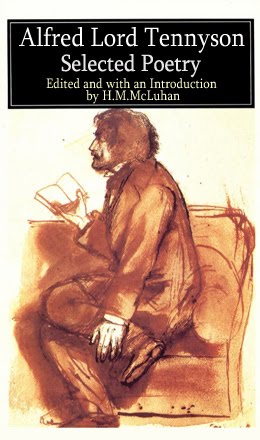

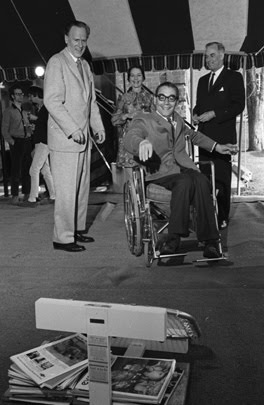




![PICNIC IN SPACE : The Great Minds of Our Time Film Series [1973]](https://blogger.googleusercontent.com/img/b/R29vZ2xl/AVvXsEjyov75DRIUBWcYLkzPYmupFy8CQ9dQ4Q798zDIN6jPNsSdBB_WuOcvPl4WjMAz10csG071oCO3BCUtIcKyHoIkCN0lCy0OxGCV_HrLXrGNKRpUiKMrqzkJh4LSc7jT_KrrqmClapSlVa8/s1600-r/PicnicInSpace.jpg)


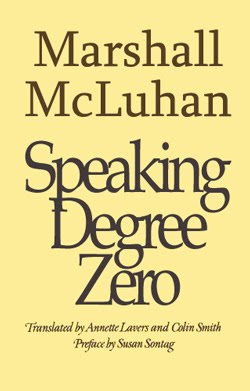

























![more Hidden ground [re:Bride] : the "flippancy" of tone seemed just "right"](https://blogger.googleusercontent.com/img/b/R29vZ2xl/AVvXsEg-hQyF9KGGhKYc73nUGmV1bStJ4fTJVh0-TL1ZtikLZEv5ppjhB3DOhFcVuzGq-kByrwtTAWgCcE173pA3UTIPe7h6xJjsPt7lRvNym007ZsdXenMDLNimKcwtaTOqkGleoxmXOeCKtxXL/s1600-r/LEAVISLEWIS.png)
















![BABA WAWA [TODAY SHOW, Toronto City Hall 1970]](https://blogger.googleusercontent.com/img/b/R29vZ2xl/AVvXsEjTZAIFkA07K36WGk951vmZnLPU99fOdNzlvVhyphenhyphenhKZEKu2n2AW5EA1CDZGaTk0aYRXUv7IOXG39igaikoE6SWm8j7QIG96wYRE54oBXwvlaNCJzp15vdkrcqR97IMMny-8sHjM-VDotTOaY/s1600-r/babaWawa.jpg)

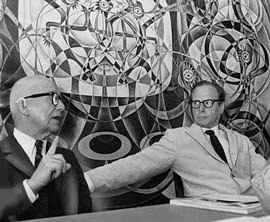

![enter the dragon : "typhon in america" [unpublished]](https://blogger.googleusercontent.com/img/b/R29vZ2xl/AVvXsEjdCnZdJ6JbaLc6hyUmUJo5UJ0m8WZSj_afYU9oRlHKIUgAIfcy2EPHNAptSRYEAmpOf0Xaa0B8iMgOTF302lY0Xmbyne0hvrdRyNo-t0Q-PPdzqX39uI3T5x5FppRPaQf9sSaXytrOpWVN/s1600-r/TIA.jpg)




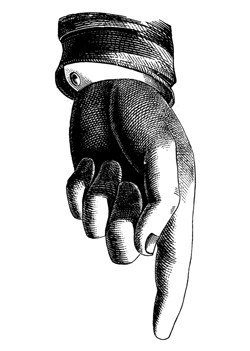






















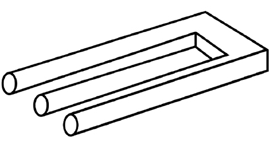









![Take Today [1972] : "the consumer becomes a producer..."](https://blogger.googleusercontent.com/img/b/R29vZ2xl/AVvXsEhA53bdVdTaXdQo1fDmrsI8oiAwF-3jampcanOq8uk3QMh8_ImkNsTiKd4-RnZY8Vbwqh1fymJiyCl1CSLcSonXHQM6XbnJYQi_Vu89gbAV4jVq73EtlbM3w6CthyphenhyphenV_pHEjE6eu_VhC489u/s1600-r/PROSUMER.jpg)
























































































![" Outtragedy of poetscalds!, Acomedy of letters " [ FW 425.24]](https://blogger.googleusercontent.com/img/b/R29vZ2xl/AVvXsEhJMrJLN3oPUb25A2tjQtWZcZxA4wZB0IOvaIAvxosAUqlFc258HHvzvlnHHvKhKq7hG3epo76izY2Bu0HC3Cy-8S46Rf0Wni3L8j8jEfpT7sXK3UFlXBMtN2v2JdrmdxvWk8VWKjkhN4-9/s1600-r/preplexLP.png)











![mars[HAL]9000 : " Tomorrow is our permanent address."](https://blogger.googleusercontent.com/img/b/R29vZ2xl/AVvXsEhmblupqmUiuV3GbyayJiDRGEO63TEgwjHi-i8b0kVYDvXrKFWTCyl-e21la4QJXC4nDFDzx51Omi6fYPLJcqRHFoP6zSsL0CVZF98eMf6mxCE2WDfvMmT4q9G3X45-P0IYGDmliE0fCR3C/s1600-r/marsHAL9000_250.jpg)




























































































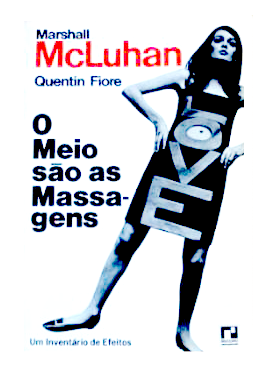





































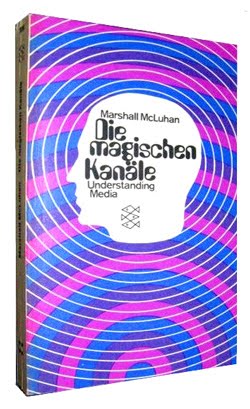
















































































![Lucifer [from Latin] <br>meaning "light-bearer"](https://blogger.googleusercontent.com/img/b/R29vZ2xl/AVvXsEhq-2kZZOfh-Syv1Ewa0Ns2O6ZeP59pcsJp9ihhKcXCaovYZO_cKxffC5iSKOXFHr6E1jiHc6zedt1U6I95831RgpVdm3qk8-9C3y1yPyrCiQe4jgx-DsbeHnjKnw9t6Qx3ZM5TSYxiPj5H/s1600-r/lucifer.png)













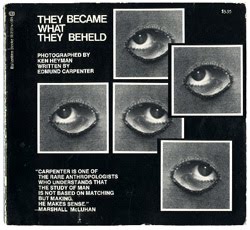






































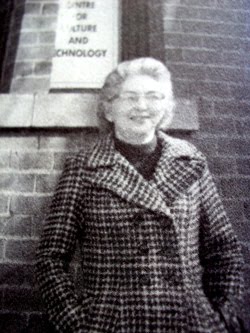
















































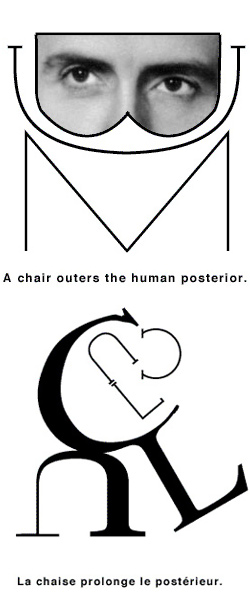






































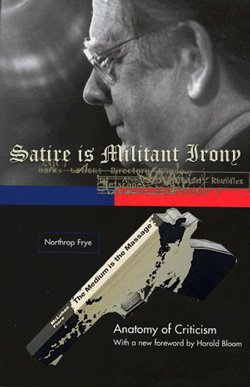























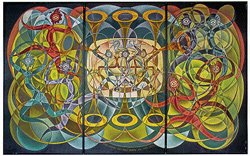










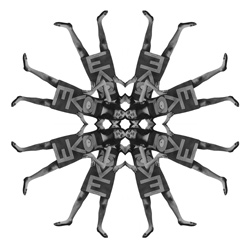





1 comment:
Social scientists have a name for this sort of incessant online contact. They call it “ambient awareness.” It is, they say, very much like being physically near someone and picking up on his mood through the little things he does — body language, sighs, stray comments — out of the corner of your eye.
The growth of ambient intimacy can seem like modern narcissism taken to a new, supermetabolic extreme — the ultimate expression of a generation of celebrity-addled youths who believe their every utterance is fascinating and ought to be shared with the world.
Twitter, in particular, has been the subject of nearly relentless scorn since it went online. “Who really cares what I am doing, every
hour of the day?” wondered Alex Beam, a Boston Globe columnist, in an essay about Twitter last month. “Even I don’t care.”
Indeed, many of the people I interviewed, who are among the most avid users of these “awareness” tools, admit that at first they
couldn’t figure out why anybody would want to do this. Ben Haley, a 39-year-old documentation specialist for a software firm who
lives in Seattle, told me that when he first heard about Twitter last year from an early-adopter friend who used it, his first reaction
was that it seemed silly. But a few of his friends decided to give it a try, and they urged him to sign up, too.
Each day, Haley logged on to his account, and his friends’ updates would appear as a long page of one- or two-line notes. He would
check and recheck the account several times a day, or even several times an hour. The updates were indeed pretty banal. One
friend would post about starting to feel sick; one posted random thoughts like “I really hate it when people clip their nails on the
bus”; another Twittered whenever she made a sandwich — and she made a sandwich every day. Each so-called tweet was so brief as to be virtually meaningless.
But as the days went by, something changed. Haley discovered that he was beginning to sense the rhythms of his friends’ lives in a
way he never had before. When one friend got sick with a virulent fever, he could tell by her Twitter updates when she was getting
worse and the instant she finally turned the corner. He could see when friends were heading into hellish days at work or when they’d
scored a big success. Even the daily catalog of sandwiches became oddly mesmerizing, a sort of metronomic click that he grew
accustomed to seeing pop up in the middle of each day.
This is the paradox of ambient awareness. Each little update — each individual bit of social information — is insignificant on its own, even supremely mundane. But taken together, over time, the little snippets coalesce into a surprisingly sophisticated portrait of your friends’ and family members’ lives, like thousands of dots making a pointillist painting. This was never before possible, because in the real world, no friend would bother to call you up and detail the sandwiches she was eating. The ambient information becomes like “a
type of E.S.P.,” as Haley described it to me, an invisible dimension floating over everyday life.
The ambient information becomes like “a type of E.S.P.,” as Haley described it to me, an invisible dimension floating over everyday
life.
“It’s like I can distantly read everyone’s mind,” Haley went on to say. “I love that. I feel like I’m getting to something raw about my
friends. It’s like I’ve got this heads-up display for them.” It can also lead to more real-life contact, because when one member of
Haley’s group decides to go out to a bar or see a band and Twitters about his plans, the others see it, and some decide to drop by — ad hoc, self-organizing socializing. And when they do socialize face to face, it feels oddly as if they’ve never actually been apart.
They don’t need to ask, “So, what have you been up to?” because they already know. Instead, they’ll begin discussing something that one of the friends Twittered that afternoon, as if picking up a conversation in the middle.
Facebook and Twitter may have pushed things into overdrive, but the idea of using communication tools as a form of “co-presence”
has been around for a while. The Japanese sociologist Mizuko Ito first noticed it with mobile phones: lovers who were working in
different cities would send text messages back and forth all night — tiny updates like “enjoying a glass of wine now” or “watching TV while lying on the couch.” They were doing it partly because talking for hours on mobile phones isn’t very comfortable (or affordable).
But they also discovered that the little Ping-Ponging messages felt even more intimate than a phone call
“It’s an aggregate phenomenon,” Marc Davis, a chief scientist at Yahoo and former professor of information science at the University of California at Berkeley, told me. “No message is the single-most-important message. It’s sort of like when you’re sitting with someone and you look over and they smile at you. You’re sitting here reading the paper, and you’re doing your side-by-side thing, and you just sort of let people know you’re aware of them.” Yet it is also why it can be extremely hard to understand the phenomenon until you’ve experienced it. Merely looking at a stranger’s Twitter or Facebook feed isn’t interesting, because it seems like blather. Follow it for a day, though, and it begins to feel like a short story; follow it for a month, and it’s a novel.
You could also regard the growing popularity of online awareness as a reaction to social isolation, the modern American disconnectedness that Robert Putnam explored in his book “Bowling Alone.” The mobile workforce requires people to travel more
frequently for work, leaving friends and family behind, and members of the growing army of the self-employed often spend their days in solitude. Ambient intimacy becomes a way to “feel less alone,” as more than one Facebook and Twitter user told me.
This is the ultimate effect of the new awareness: It brings back the dynamics of small-town life, where everybody knows your business. Young people at college are the ones to experience this most viscerally, because, with more than 90 percent of their peers
using Facebook, it is especially difficult for them to opt out. Zeynep Tufekci, a sociologist at the University of Maryland, Baltimore County, who has closely studied how college-age users are reacting to the world of awareness, told me that athletes used to sneak off to parties illicitly, breaking the no-drinking rule for team members. But then camera phones and Facebook came along, with students posting photos of the drunken carousing during the party; savvy coaches could see which athletes were breaking the rules.
First the athletes tried to fight back by waking up early the morning after the party in a hungover daze to detag photos of themselves so they wouldn’t be searchable. But that didn’t work, because the coaches sometimes viewed the pictures live, as they
went online at 2 a.m. So parties simply began banning all camera phones in a last-ditch attempt to preserve privacy.
“It’s just like living in a village, where it’s actually hard to lie because everybody knows the truth already,” Tufekci said. “The current generation is never unconnected. They’re never losing touch with their friends. So we’re going back to a more normal place,
historically. If you look at human history, the idea that you would drift through life, going from new relation to new relation, that’s
very new. It’s just the 20th century.”
Psychologists and sociologists spent years wondering how humanity would adjust to the anonymity of life in the city, the wrenching
upheavals of mobile immigrant labor — a world of lonely people ripped from their social ties. We now have precisely the opposite problem. Indeed, our modern awareness tools reverse the original conceit of the Internet. When cyberspace came along in the early ’90s, it was celebrated as a place where you could reinvent your identity — become someone new.
“If anything, it’s identity-constraining now,” Tufekci told me. “You can’t play with your identity if your audience is always checking up on you.
Young people today are already developing an attitude toward their privacy that is simultaneously vigilant and laissez-faire. They
curate their online personas as carefully as possible, knowing that everyone is watching — but they have also learned to shrug and accept the limits of what they can control.
It is easy to become unsettled by privacy-eroding aspects of awareness tools. But there is another — quite different — result of all this incessant updating: a culture of people who know much more about themselves. Many of the avid Twitterers, Flickrers and Facebook users I interviewed described an unexpected side-effect of constant self-disclosure. The act of stopping several times a day to observe what you’re feeling or thinking can become, after weeks and weeks, a sort of philosophical act. It’s like the Greek dictum to “know thyself,” or the therapeutic concept of mindfulness. (Indeed, the question that floats eternally at the top of
Twitter’s Web site — “What are you doing?” — can come to seem existentially freighted. What are you doing?) Having an audience
can make the self-reflection even more acute, since, as my interviewees noted, they’re trying to describe their activities in a way that is not only accurate but also interesting to others: the status update as a literary form.
Post a Comment